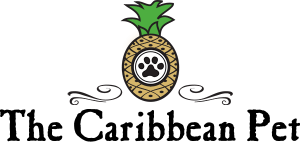- Language: Dutch (English widely spoken)
- Currency: Netherlands Antillean florin or guilder
- Temperature: Average 80°F year-round Square Miles: 16 Approx.
- Population: 43,000
ABOUT. Sint Maarten, part of the Netherlands Antilles, is located on the southern side of the island it shares with French St Martin. It was originally divided from St Martin by the Treaty of Concordia, which was signed on the island’s Mount Concordia in 1648. Sint Maarten, commonly spelled St Maarten is the smallest island in the world shared by two nations, France and the Netherlands, and is made up of around 120 nationalities. The island measures 37 square miles, of which 16 square miles is Dutch territory and 21 square miles belongs to French Saint Martin. St. Maarten is a municipality of the Netherlands Antilles, part of the Kingdom of the Netherlands.
The first inhabitants of St Maarten were Arawaks and later the Carbis. The Caribs named St. Maarten ‘Soualiga’ or ‘land of salt’ in reference to the island’s naturally occurring salt pans. It is believed that Christopher Columbus discovered the island in 1493. St. Maarten first appeared on a map in 1516 with the name Sam Mtim and was a Spanish territory by that time. The Spaniards called the island San Martin, in honor of Saint Martin of Tours. The island was uninhabited until 1631 when the Dutch founded a trading post, built Fort Amsterdam and began to harvest salt from the coastal lagoons.Jan Claeszen Van Campen became its first governor, and soon thereafter the Dutch East India Company began their salt mining operations.
The Spaniards abandoned the island in 1648, leaving the Dutch and French to fight over it. The French wanted to colonize the islands between Trinidad and Bermuda and the Dutch found San Martín a convenient halfway point between their colonies in New Amsterdam (present day New York) and Brazil. Dutch colonists came from St. Eustatius, while the French came from St. Kitts. After some initial conflict, both sides realized that neither would yield easily. Preferring to avoid an all-out war, they signed the Treaty of Concordia in 1648, which divided the island in two. Despite signing the Treaty of Concordia in 1648 which partitioned the island between the two nations, they continued to dispute it throughout 18th century. In fact, St. Maarten changed hands 16 times as the Dutch, French and the English vied for control of the Caribbean. The current border between St. Maarten and Saint Martin was set by the 1817 Treaty of Paris.
In spite of the treaty, relations between the two sides were not always friendly. Between 1648 and 1816, conflicts changed the border sixteen times. With the new cultivation of cotton, tobacco, and sugar, the French and the Dutch imported slaves to work he plantations. During the 18th and 19th centuries, the island was a plantation economy, producing salt, indigo, cotton, tobacco and, most important of all, sugar, although never on the scale of other Caribbean islands due to a combination of limited water and soil conditions.
On 12 July 1848, the French abolished slavery on their side of the island and it was abolished in St. Maarten in 1863. The island economy went into decline until 1939 when St. Maarten was declared a duty-free port and tourism began as a profitable industry in St in the 1950s. Sint Maarten became an “island territory” of the Netherlands Antilles in 1983. Before that date, Sint Maarten was part of the island territory of the Windward Islands, together with Saba and Sint Eustatius. The island territory of Sint Maarten was ruled by an island council, an executive council, and an administrator appointed by the Dutch Crown. On 10 October 2010, Sint Maarten became a constituent country within the Kingdom of the Netherlands, making it a constitutional equal partner with Aruba, Curaçao, and the Netherlands proper.
Despite its size, St Maarten/Saint Martin has varied landscapes. There are salt pans, lagoons, hills, and valleys where the terrain is rugged. The highest point on the island is Pic Paradis with an altitude of 1,400 feet. The vegetation ranges from cacti and palm trees to native Caribbean plants. Sunshine and warm temperatures linger throughout the year. The trade winds keep temperatures comfortable and the average is 80 F in the winter and 86 F in the summer. Scuba diving and snorkeling are popular at the Sint Maarten Nature Foundation’s protected marine park. Overall, this tiny island offers a unique blend of French, Dutch and Caribbean culture, beaches and water sports.

